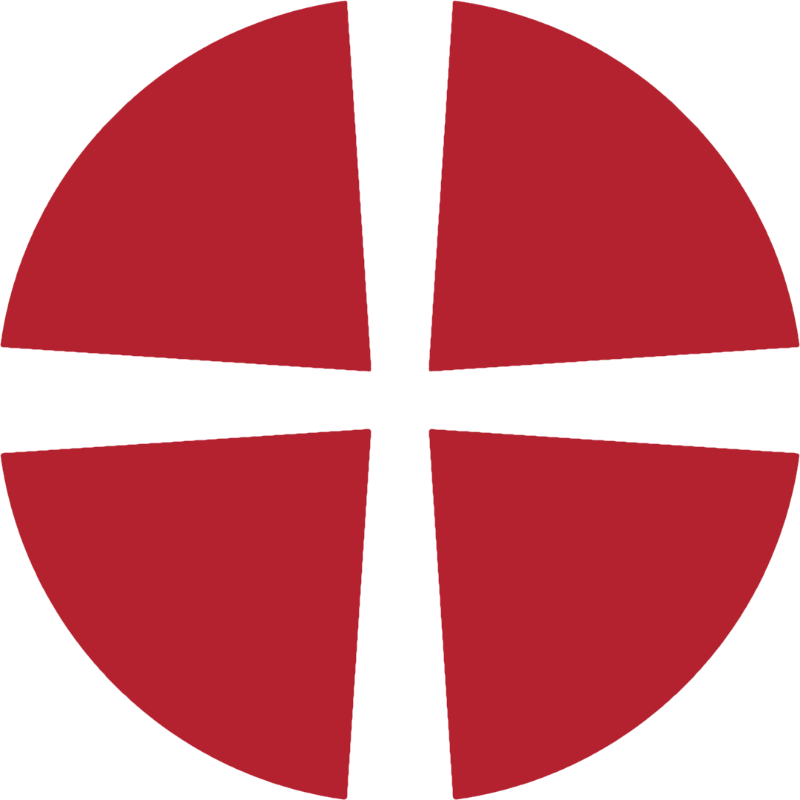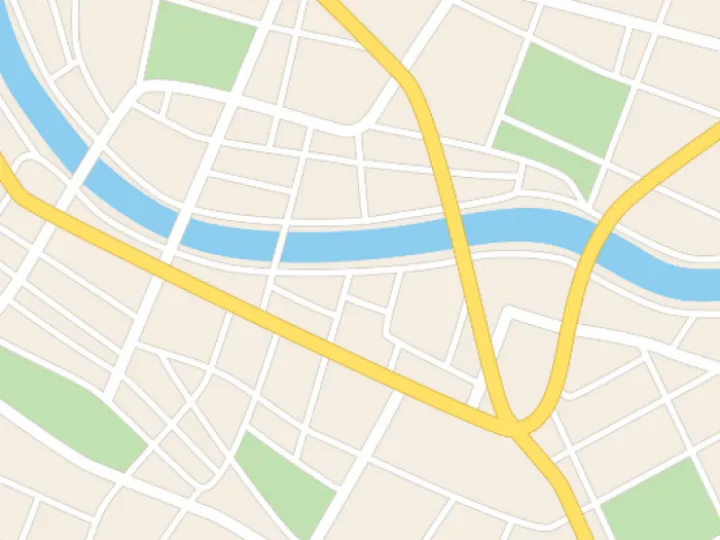A History of Burnham Methodist Church
 Old photograph of the Chapel
Old photograph of the Chapel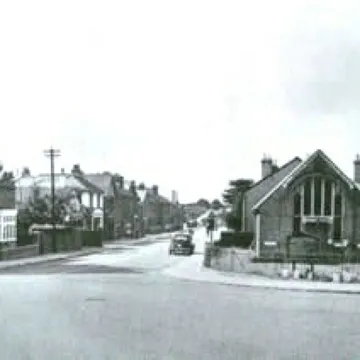 1911 Souvenir Teapot
1911 Souvenir Teapot The winning choir in the 1920s
The winning choir in the 1920s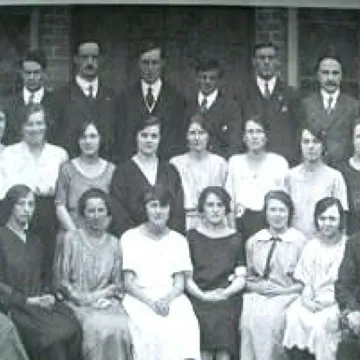 Stone laying plaque – 1957
Stone laying plaque – 1957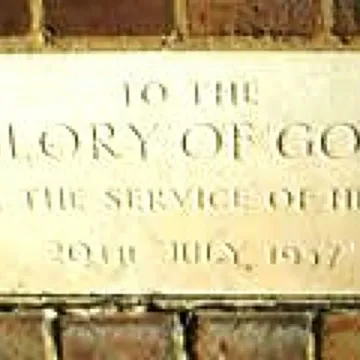 Ministers at the 1957 ceremony
Ministers at the 1957 ceremony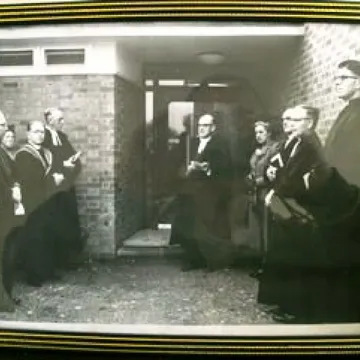 Window in memory of Frederick Moon
Window in memory of Frederick Moon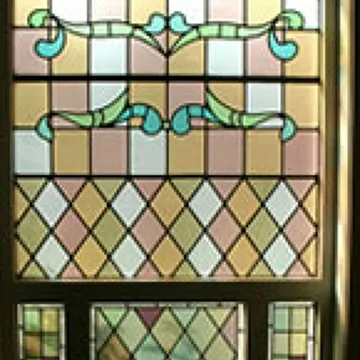 Plaque in memory of Frederick Moon
Plaque in memory of Frederick Moon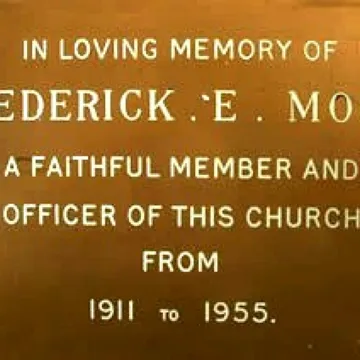 Window & plaque in memory of James and Florrie Ayres
Window & plaque in memory of James and Florrie Ayres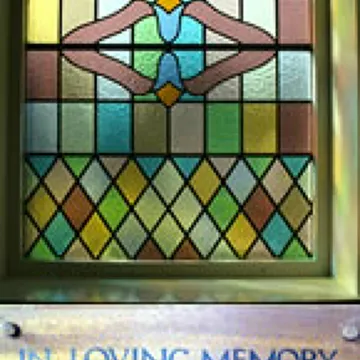 Inscription on Centenary Mug
Inscription on Centenary Mug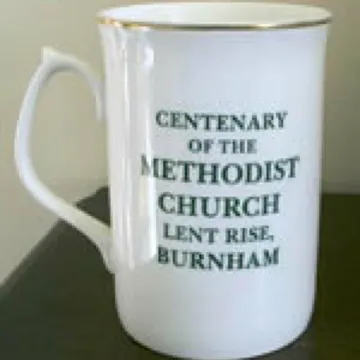 Banner for the Chapel Centenary
Banner for the Chapel Centenary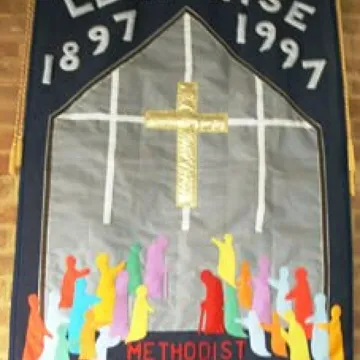 Picture on the Centenary Mug
Picture on the Centenary Mug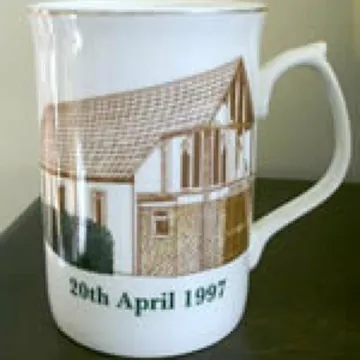

There has been a Methodist Church at Lent Rise, Burnham, since 1897. The one-time hamlet of Lent Rise lies in the South-West of the village, bordered by Slough to the South, and Taplow to the West. The word Lent comes from the Old English word meaning Shelter. Lent was one of the three great open fields of Burnham, the other two being Tockley (Tockley Road lies off Gore Road) and Brightwell (or Britwell, now part of Slough) to the East. The original Bright Well still exists -- in a Burnham garden.
Methodists had been meeting spasmodically in the Burnham area since 1830, as is shown by the Wesleyan Circuit Plan for the time. In 1832, Lord Grenville, Lord of the Manor, gave the Primitive Methodists permission to build a chapel at Littleworth Common. However, the church was never strong in membership. Possibly the estate workers thought they might lose their jobs if they left the Anglican church! By 1876, the Primitive Methodist cause was failing, and the building eventually became the Dropmore (St. Anne's) Parish Room.
The establishment of Methodism in Burnham was due to the efforts of the Wesleyan Methodists in Maidenhead. That thriving church had been witnessing since 1829, initially in Bridge Street, later in High Street.1 The Maidenhead Leaders' Meeting Minute Book of January 1861 records:
This meeting hears with pleasure that Mr Cleare has commenced a New Class in Burnham and recommends him to persevere.
Charles Cleare's duties at Maidenhead meant that the needs of Burnham were put in the hands of the Maidenhead Mission Committee and then the Maidenhead Leaders' Meeting.
Charles Cleare died in 1898. The family name is still well known in Burnham.
The Burnham Methodists had various meeting places, including one in Taplow. Although numbers were never high, at the Quarterly Meeting of the Circuit in March 1896, permission was given for the erection of a new Wesleyan Chapel at Lent Rise, on the corner of Lent Rise Road and Eastfield Road, then known as Nearway Road. The foundation stones were laid in November and the builders lost no time ... the opening services were held on Easter Monday 1897! 170 people sat down to tea. Would there ever be a Methodist event without tea!? Apparently it was a very windy day and the tea tent nearly fell down!
In 1906 a tin-roofed schoolroom was built, costing £160. The Congregation was small and the fund-raising efforts must have been very creditable. For a number of years the membership was never large; Lent Rise was still a sparsely-populated rural area with several other churches not far away. However, the building of the Slough Trading Estate after the First World War brought opportunities for better paid industrial work as opposed to employment on the local farms and nurseries. The railway stations at Burnham and Taplow served those who worked in the London area.
Mystery of mysteries! Where would the Methodist Church be without (yet more) tea? The history of this large teapot, inscribed WESLEYAN CHURCH, LENT RISE 1911, has been lost. If you can solve the mystery, the members of Burnham Church would love to hear from you!
By the 1920s the Church was flourishing, with, apart from the morning and evening services and the afternoon Sunday School, a number of weekly activities. It was during the 1920s that this splendid choir won the local Methodist Churches' Eisteddfod. The conductor was Frederick Moon (front row, second from right).
The Wesley Guild was particularly strong with a varied and interesting programme, as illustrated by a small selection from the 1932 list:
- Gems of Hebrew Poetry.
- Life in a Logging Camp.
- Songs of the Sea.
The following year the Schoolroom was enlarged, and 30 chairs purchased at a cost of 4s.3d (approximately 21p) each. Strips of land on the Church site were let out for allotments. However, in 1958 Buckinghamshire County Council purchased some of this land to improve the "vision splay" (visibility) on the corner of Lent Rise and Eastfield Roads. The remainder became what was, by then, a much-needed car-park.
In the post Second World War years, an extensive rebuilding programme was put in hand. After the stone laying ceremony in 1957, 1958 saw the opening of a new vestry, cloakrooms, kitchen, double classroom and a large hall. It is interesting to note that the double classroom is still referred to as such by Ministers at the 1957 ceremony the "old-timers" although the double function disappeared many years ago!Newer members sometimes wonder what the "Oldest Inhabitants" are talking about! These premises, built at a cost of £9,200, were to become well-used. In January 1959 there were 120 children and young people on the roll, and the mid-week activities attracted a good attendance.
In 1962 the newly-refurbished Church was opened after a period in which all services had been held in the main hall. A new chancel and porch were built and the pews removed. The harmonium was replaced by an organ and the premises were opened by Mrs Elsie Moon. The Moon family had been active at Lent Rise since the very early days and members of the family still live locally. There is a stained glass window in the Church, dedicated to Fred Moon.
In the early 1970s, companies of the Boys' and Girls' Brigades were formed and continued until 1984. Sadly, the Youth Club was no more, but the Sunday School, although diminished, continued for many more years.
1981 saw the founding of the Association of Burnham Christians, a title suggested by Jack Jeffery, whose work for the Church and local community for many years is almost beyond praise. The Methodist Church took a significant rôle in this ecumenical group of local churches, which initiated and led a number of projects for some years. This included the great privilege of having Rev the Lord Donald Soper to preach at the celebration service to mark the conclusion of another successful "Burnham Week".
Some quiet years followed, in the 1990s and early years of the new century. However, the premises were well used by the community, and the Church-sponsored Thursday Lunch Group still continues, as does the Mothers and Toddlers morning, although the latter is no longer run by Church members. The church celebrated its centenary in 1997.
The church was refurbished in 2016-17, with the main worship area given a very clear and bright look and new heaters installed. On the wall there are now four banners, each depicting a season of the year -- a gift from the Craft Group of The Well @ Lent Rise.
The Church at the Crossroads was always regarded as a focal point in the Lent Rise ward of Burnham. In recent years the Methodist witness has been revitalised by The Well @ Lent Rise, a Christian outreach group which uses the premises as a base from which to preach the gospel and to care, both practically and spiritually, for the local community.
Just as Charles Cleare's vision led him to do a century and a half ago...
Bibliography
The Church at the Crossroads. The story of the Burnham Methodist Church, Lent Rise. 1897 – 1997 by Hilary P Evans, April 1997
Notes
1. For more information, see the History page for High Street Maidenhead.
Acknowledgements
The Thames Valley Circuit would like to express its appreciation to Burnham Historians for permission to reproduce the photographs of the Lent Rise Wesleyan Chapel and the Methodist Church Choir.
